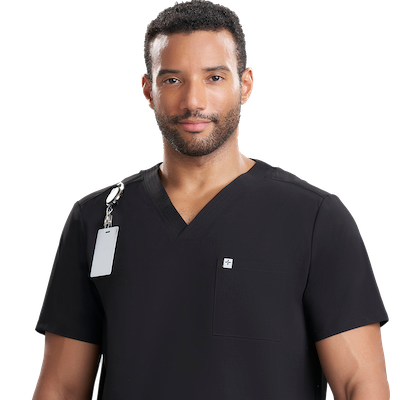We've been hearing a lot about Crohn's disease recently and wanted to share some basic information with our community!
What is Crohn’s disease?
Crohn’s disease is the inflammation of the digestive system that can run from the mouth to anus. Signs and symptoms often include abdominal pain, bleeding, diarrhea, fever and weight loss. Crohn’s disease can cause complications outside the digestive system including skin rashes, arthritis, inflammation of the eye and feeling lethargic. The causes of Crohn’s disease are not well understood. While we do know that diet and stress may aggravate Crohn’s disease, they do not cause the disease; it is caused by a combination of environmental, immune and bacterial factors in genetically susceptible people. Recent research suggests hereditary, genetic, and/or environmental factors contribute to the development of Crohn’s disease and it may affect as many as 700,000 Americans. The likelihood of contracting this disease is equal between men and women and can occur at any age. However, it is more prevalent among adolescents and young adults between the ages of 15 and 35. Crohn’s disease tends to run in families, so if you or a close relative have the disease, your family members have a significantly increased chance of developing Crohn’s. Studies have shown that 5% to 20% of affected individuals have an immediate relative with Crohn’s disease. Crohn’s is most common among people of eastern European backgrounds, including Jewish Europeans. However, in recent years, there have been a growing number of cases in African Americans contracting Crohn’s disease.
What is the digestive tract and why is this important?
The human gastrointestinal tract is an organ system responsible for transporting and digesting food, absorbing nutrients and expelling waste. The tract consists of the stomach and intestines and is divided into the upper and lower gastrointestinal tracts. The gastrointestinal tract normally contains harmless bacteria, many of which aid in digestion. The immune system usually attacks and kills foreign invaders, such as bacteria, viruses, fungi and other microorganisms. Under normal circumstances, the harmless bacteria in the intestines are protected from such an attack. In people with Crohn’s disease, these bacteria are mistaken for harmful invaders and the immune system begins to attack these invaders. Cells travel out of the blood to the intestines causing inflammation. However, the inflammation does not subside, leading to chronic inflammation, thickening of the intestinal wall and eventually causing patient symptoms mentioned above like abdominal pain, bleeding and diarrhea.
How is Crohn’s disease diagnosed?
A healthcare provider diagnoses Crohn's disease using the following:
- medical and family history
- physical exam
- blood tests
- upper gastrointestinal series
- computerized tomography (CT) scan
- intestinal endoscopy
The healthcare provider may first perform a series of medical tests to rule out other bowel diseases that cause symptoms similar to those of Crohn's disease.
Medical and Family History
Recording and reviewing medical and family history can help your healthcare provider diagnose Crohn's disease and understand your symptoms. He or she will ask you to describe your
- family medical history
- symptoms
- current and past medical conditions
- current medications
Physical Exam
A physical exam may help diagnose Crohn's disease. During a physical exam, your healthcare provider most often
- checks for abdominal distension, or swelling
- listens to sounds within the abdomen using a stethoscope
- taps on the abdomen to check for tenderness and pain and establish if the liver or spleen is abnormal or enlarged
Blood tests
A blood test involves drawing blood at a healthcare provider's office or a lab. A lab technologist will analyze the blood sample and your healthcare provider may use the blood tests to look for changes in
- red blood cells: when the red blood cell count is lower than normal, a patient may have anemia.
- white blood cells: when the white blood cell count is higher than normal, a person may have inflammation or infection somewhere in his or her body because white blood cell fight infection.
Upper Gastrointestinal Series
An Upper Gastrointestinal Series,also called a barium swallow, uses x-rays and fluoroscopy to help diagnose symptoms in the upper GI tract. Fluoroscopy is a form of x-ray that makes it possible to see the internal organs and their motion on a video monitor. This test does not require anesthesia. During the procedure, you will stand or sit in front of an x-ray machine and drink barium, a chalky liquid. Barium coats the esophagus, stomach, and small intestine so the radiologist and a healthcare provider can see the shape of these organs more clearly on x-rays. You may experience bloating and nausea for a short time after the test. For several days afterward, barium liquid in the GI tract causes white or light-colored excretion.
Computerized Tomography Scans
Computerized Tomography Scansuse a combination of x-rays and computer technology to create images. For a CT scan, a healthcare provider may give the patient a solution to drink and an injection of a special dye. CT scans require the patient to lie on a table that slides into a tunnel-shaped device where the x-rays are taken. The patient does not need anesthesia. CT scans can diagnose both Crohn's disease and the complications seen with the disease due to the imaging seen after ingesting the solution.
Colonoscopy
A Colonoscopy is a test that uses a long, flexible, narrow tube with a light and tiny camera on one end to look inside a patient's rectum and entire colon. In most cases, light anesthesia and pain medication help patients relax for the test. The medical staff will monitor a patient's vital signs and try to make him or her as comfortable as possible. The tube inflates the large intestine with air to give the gastroenterologist a better view. The camera sends a video image of the intestinal lining to a monitor, allowing the gastroenterologist to examine the tissues lining the colon and rectum. The gastroenterologist may move the patient several times and adjust the scope for better viewing. Once the scope has reached the opening to the small intestine, the gastroenterologist slowly withdraws it and examines the lining of the colon and rectum again.
A colonoscopy can show inflamed and swollen tissue or abnormal growths of tissue that grew on the inner lining of the intestine. If the gastroenterologist suspects Crohn's disease, he or she will biopsy the patient's colon and rectum. A biopsy is a procedure that involves taking small pieces of tissue for examination with a microscope.
Treatments
A healthcare provider treats Crohn's disease with
- medications
- bowel rest
- surgery
Which treatment a person needs depends on the severity of the disease and symptoms. Each person experiences Crohn's disease differently, so healthcare providers adjust treatments to improve the person's symptoms and induce, or bring about, remission.
Medications
While no medication cures Crohn's disease, many can reduce symptoms. The goals of medicating are
- to lead to remission and maintain remission
- to improve quality of life
Many people with Crohn's disease require medication therapy. Healthcare providers will prescribe medications depending on the person's symptoms. Two coming treatments include corticosteroid and immunomodulators. Corticosteroids help reduce the activity of the immune system and decrease inflammation. Healthcare providers prescribe corticosteroids for people with moderate to severe symptoms. In most cases, healthcare providers do not prescribe corticosteroids for long-term use.
Biologic therapies are medications that target a protein made by the immune system. Neutralizing this protein decreases inflammation in the intestine. Biologic therapies work quickly to bring on remission, especially in people who do not respond to other medications.
Bowel Rest
Sometimes Crohn's disease symptoms are severe and a person may need to rest his or her bowel for a few days to several weeks. Bowel rest involves drinking only clear liquids or having no oral intake. To provide the patient with nutrition, a healthcare provider will deliver IV nutrition through a special catheter, or tube, inserted into a vein in the patient's arm like a PICC line. Some patients stay in the hospital, while other patients are able to receive the treatment at home. In most cases, the intestines are able to heal during bowel rest.
Surgery
Even after medication, up to 20% of people will need surgery to treat their Crohn's disease. Although surgery will not cure Crohn's disease, it can treat complications and improve symptoms. Healthcare providers most often recommend surgery to treat
- bleeding that is life-threatening
- bowel obstructions
- side effects from medications when they threaten a person's health
- symptoms when medications do not improve a person's condition
Patients will receive general anesthesia and most patients will stay in the hospital for 3 to 7 days after the surgery. Full recovery may take 4 to 6 weeks.
- Small bowel resection is surgery to remove part of a patient's small intestine. When a patient with Crohn's disease has a blockage or another severe disease in the small intestine, a surgeon may need to remove that section of the intestine.
- Subtotal colectomy, also called a large bowel resection, is surgery to remove part of a patient's large intestine. When a patient with Crohn's disease has a blockage or severe disease in the large intestine, a surgeon may need to remove that section of the intestine to dispel the inflammation.
- Proctocolectomyis surgery to remove a patient's entire colon and rectum. One could also get an ileostomy, which is a stoma, or opening in the abdomen, that a surgeon creates from a part of the small intestine. The surgeon brings the end of the intestine through an opening in the patient's abdomen and attaches it to the skin, creating an opening outside of the patient's body.
Diet and Nutrition
Researchers have not found a direct link between diet and Crohn’s however, good nutrition is important in the management of Crohn's disease. Dietary changes can help reduce symptoms. A healthcare provider may recommend that a person make dietary changes such as
- avoiding carbonated drinks
- avoiding popcorn, vegetable skins, nuts, and other high-fiber foods
- drinking more liquids
- eating smaller meals more often
- keeping a food diary to help identify troublesome foods
Healthcare providers may recommend nutritional supplements and vitamins for people who do not absorb enough nutrients. Depending on a person's symptoms or medications, a healthcare provider may recommend a specific diet, such as:
- high-calorie diet
- lactose-free diet
- low-fat diet
- low-fiber diet
- low-salt diet
Here at Care+Wear, we believe that people come first and patients come second. As a result, we have created a PICC line covers and chest port access clothing. If you needed a PICC line as a result of Crohn’s disease, we hope this will help you get back to living your life. We’d love to share your story with our community too! Email our team at wecare@careandwear.com to be featured on our blog.










Leave a comment (all fields required)